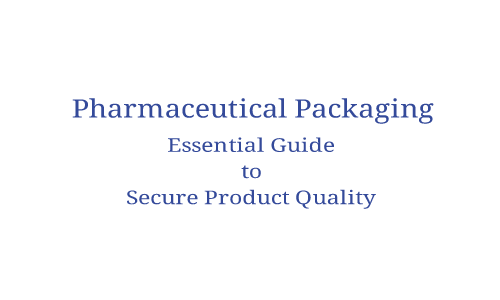Pharmaceutical Packaging : Essential Guide to Secure Product Quality
Pharmaceutical Packaging encompasses the process of designing and developing primary, secondary, and tertiary packaging for pharmaceutical products, ensuring their safety, integrity, and quality. It plays a crucial role in protecting medications from factors like moisture, light, air, and contamination.
With advancements in technology, pharmaceutical packaging has evolved to incorporate features like child-resistant caps, tamper-evident seals, and temperature-sensitive materials. This not only ensures the product’s safety and efficacy but also enhances patient compliance and reduces the risk of dispensing errors.
Additionally, pharmaceutical packaging helps in accurate dosage measurement, providing proper labeling, and facilitating convenient administration of medication. It plays a vital role in maintaining the shelf life and stability of pharmaceuticals, ensuring that they reach the end users in optimum condition for safe consumption.
Role Of Packaging In Ensuring Product Safety And Integrity
Protection: Pharmaceutical products need to be safeguarded from environmental factors such as moisture, light, and oxygen that can potentially compromise their effectiveness. Secure packaging acts as a shield, preventing any damage that may hinder the product’s quality.
Contamination prevention: Maintaining sterility is crucial in pharmaceutical packaging. A well-designed packaging system prevents contamination from external sources, including microorganisms and foreign particles, thereby ensuring the product’s integrity.
Tamper resistance: Pharmaceutical packaging should incorporate tamper-evident features to safeguard against tampering or unauthorized access. This helps to maintain the integrity of the product and protects the end consumer.
Regulatory Requirements For Pharmaceutical Packaging
Child-resistant packaging: Pharmaceutical products, especially those that can be harmful if ingested by children, must adhere to strict regulations for child-resistant packaging. This ensures that children are unable to open or consume the contents accidentally.
Labeling and information: Regulatory bodies have stringent guidelines regarding labeling and information provided on pharmaceutical packaging. Clear and accurate labeling is necessary to convey essential details such as dosage instructions, drug interactions, expiration dates, and potential side effects.
Good Manufacturing Practices (GMP): Pharmaceutical manufacturers must comply with GMP guidelines, which include packaging requirements to ensure product safety and quality. These guidelines cover various aspects, including cleanliness, traceability, and quality assurance.
Key Challenges In Pharmaceutical Packaging
Compatibility: Pharmaceutical products come in different forms, such as tablets, capsules, liquids, and injectables. Ensuring compatibility between the product and the packaging material can pose a challenge, as factors like chemical interactions and stability need to be considered.
Cost-effectiveness: Balancing the need for secure packaging and cost-effectiveness can be challenging in the pharmaceutical industry. As packaging materials and processes continue to evolve, finding the right balance between protecting the product and managing costs becomes an ongoing task.
Sustainability: The pharmaceutical industry is increasingly focusing on sustainable packaging solutions to reduce environmental impact. Developing packaging that is both eco-friendly and meets the necessary requirements adds an extra layer of complexity.
Benefits Of Secure Packaging
Product integrity: Secure packaging protects pharmaceutical products from factors that can compromise their quality, ensuring that they reach the end user in optimal condition.
Brand reputation: Professional packaging enhances the reputation of pharmaceutical companies by instilling trust in their products. It reflects a commitment to quality, safety, and the well-being of consumers.
Regulatory compliance: Adhering to regulatory requirements for packaging is crucial in the pharmaceutical industry. Secure and professional packaging helps companies meet these standards and avoid potential legal issues.
Consumer safety: The primary focus of secure packaging is to protect the end user. By implementing tamper-resistant features and clear labeling, pharmaceutical companies prioritize consumer safety and contribute to public health.
Compatibility With Pharmaceutical Formulations
Pharmaceutical packaging must be compatible with diverse formulations to ensure the safety and potency of medications. Here’s how it accomplishes this:
Chemical resistance: Packaging materials are selected based on their compatibility with different types of medications, preventing chemical interactions that could compromise the drug’s efficacy.
Leachables and extractables testing: Packaging components are rigorously tested to ensure they do not leach harmful chemicals into the medication, maintaining its purity.
In summary, secure and professional packaging plays an indispensable role in the pharmaceutical industry to maintain product quality. By ensuring product safety and integrity, meeting regulatory requirements, and addressing key challenges, pharmaceutical companies can reap the benefits of trust, compliance, and consumer satisfaction.
Read also: Cost-Effectiveness and Operational Efficiency in Pharmaceutical Packaging





